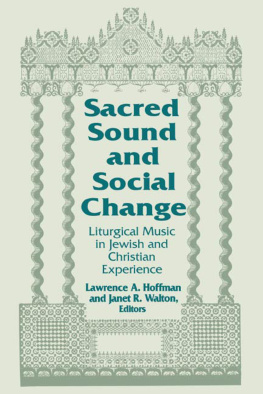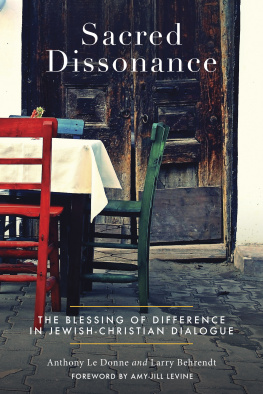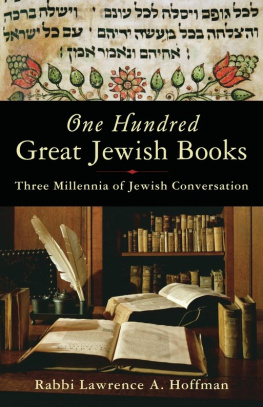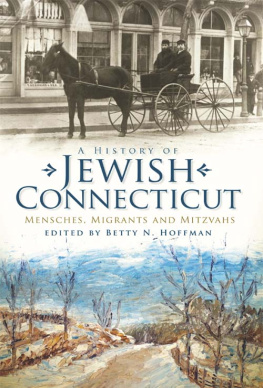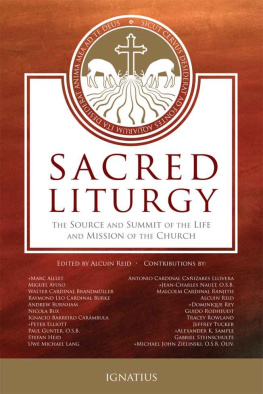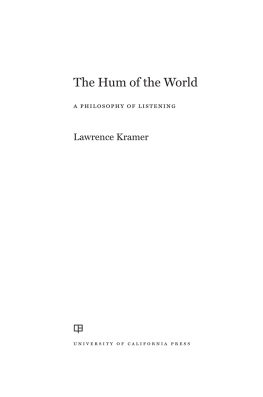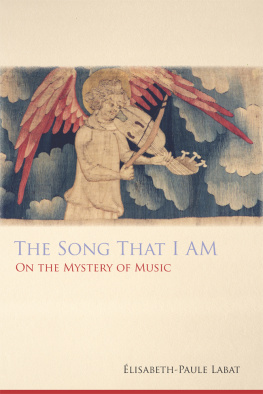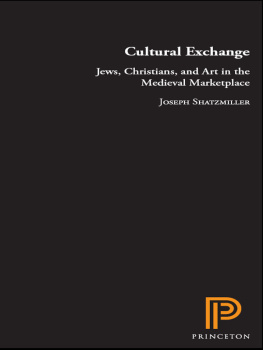
SACRED SOUND AND SOCIAL CHANGE: LITURGICAL MUSIC IN JEWISH AND CHRISTIAN EXPERIENCE
TWO LITURGICAL TRADITIONS
Volume 3
Sacred Sound and Social Change:
Liturgical Music in Jewish and Christian Experience
Edited by
LAWRENCE A. HOFFMAN
and
JANET R. WALTON
University of Notre Dame Press
Notre Dame
University of Notre Dame Press
Notre Dame, Indiana 46556
All Right Reserved
Copyright 1992 by University of Notre Dame
Published in the United States of America
Library of Congress Cataloging-in-Publication Data
Sacred sound and social change: liturgical music in Jewish and Christian experience / edited by Lawrence A. Hoffman and Janet R. Walton
p. cm. (Two liturgical traditions ; v. 3)
Took its origin from a conference held in oct. 1986 at Hebrew Union College-Jewish Institute of Religion
Includes bibliographical references and index.
ISBN 978-0-268-01746-0
1. Church music. 2. MusicReligious aspectsChristianity. 3. Synagogue musicHistory and criticism. 4. JewsMusicHistory and criticism. I. Hoffman, Lawrence A., 1942 II. Walton, Janet Roland. III Series.
ML2900.S21992
782.3dc20
91-51120
CIP
ISBN 9780268160579
This e-Book was converted from the original source file by a third-party vendor. Readers who notice any formatting, textual, or readability issues are encouraged to contact the publisher at .
Contents
INTRODUCTION:
North American Culture and Its Challenges to Sacred Sound Janet R. Walton
PART 1
RECONSTRUCTING THE PAST: SACRED SOUND FROM THE BIBLE TO REFORM
Eliyahu Schleifer
Geoffrey Goldberg
Margot Fassler and Peter Jeffery
Robin Leaver
PART 2
EXPLORING THE PRESENT: SACRED SOUND IN NORTH AMERICA TODAY
Miriam Therese Winter
Horace T. Allen, Jr.
Benjie-Ellen Schiller
PART 3
COMPOSING SACRED SOUNDS: FOUR NEW SETTINGS OF PSALM
Lawrence A. Hoffman and Janet R. Walton
Nansi Carroll
Don E. Saliers
Ben Steinberg
Alec Wyton
PART 4
CRITIQUING SACRED SOUND: PERSPECTIVES ON THE SACRED AND THE SECULAR
Samuel Adler
Jon Michael Spencer
Virgil C. Funk
CONCLUSION:
On Swimming Holes, Sound Pools, and Expanding Canons Lawrence A. Hoffman
JANET R. WALTON
What do we sing in a time when nations battle, when cultures clash, when races are at odds, when sexes struggle in the courts (and out of them), when religions revert to factitious holy wars? Can we really be so bold as still to sing, Gods covenant lasts forever?
Over the centuries, liturgical music in synagogue and church has shaped communities faith. More persuasively than words alone, music expresses what we believe about God. It proclaims the terms of our relationships with each other. It connects our faith to the tangible concerns that confound our world.
Poignant illustrations of the power of music are strikingly exemplified in communities where those tangible concerns mean nothing less than the work of human survival. Jews on the brink of extinction in Nazi death camps are reported nonetheless to have sung Ani maamin, I believe with perfect faith in the coming of the Messiah, just as their forebears in eleventh-century Rhineland communities sang Alenu leshabeach, It is our lot to praise the Eternal One, even as Crusaders were burning them alive.1 No evidence assured them that their song could change their circumstances. Yet they persisted in singing. Song offered not only a public witness but also strength one to another.
Similarly, blacks in the midst of slavery sang,
My burdens so heavy, I cant hardly see,
Seems like everybody is down on me,
An thats all right, I dont worry,
Oh, there will be a better day.2
The blues style of this songboth its music and its text-gave voice to the reality of utter pain but a refusal to be conquered by it.3 In their singing, blacks identified and solidified their determination. Their color would not destine them to be demeaned forever. There will be a better day.
Musics capacity to express emotion as well as conceptual insight makes it a primary vehicle for the worshiper to identify with the deepest core of his or her faith. When a community or an individual sings about suffering, joy, or determination, what might otherwise be perceived as experience inchoate receives a name, and then can be shared in both heart and mind. In that sharing is power, participation in the fresh stuff of faith4 that makes belief matter.
Liturgical music has always functioned this way, linking experience to faith in an atmosphere of emotional commitment. But standing now at the close of the twentieth century, we find religious communities asking new questions of their worship. Knowing that a succession of wars, economic upheavals, and the denial of basic human rights mark their world, people are demanding liturgical experiences that enable them to make their faith matter, in the sense that it will carry over to the ordinary and the not-so-ordinary choices that contemporary circumstances foist upon them. Such an expectation challenges all liturgical leaders, but invites composers and performing musicians in a special way. The rapidly changingsome would even say, deterioratingsituations featured on the nightly news quickly make yesterdays worship appear utterly irrelevant. Old texts and sounds come under attack as thoughtful and committed people ask, What does it mean to sing Gods covenant lasts forever in the face of senseless deaths, pervasive violence, differences settled only by war? What sounds and words do we use to call upon God? What are the terms of this covenant? As traditional music is thus subjected to careful scrutiny, new music is emerging to express a spectrum of responses. Never in the history of the church, says Robin Leaver, have so many new hymnals been published within such a short time. Never has there been more activity in the writing of new texts and tunes. Leaver is quite correct! He estimates that between 1984 and 1994, forty-five new hymnals will be produced, thirty as official hymnals for church denominations.5
Driving this unprecedented musical output are both theological and sociological developments. Theologically speaking, we have come to recognize what ought surely to have been evident long before: as a cursory glance at religious history discloses, a human understanding of the nature of God is uncontainable in any single set of metaphors. No words identify God adequately. No image suits every generation equally. Each age seeks knowledge of God through its own favored tropes that emerge as privileged because they make God real in the light of the circumstances that each age faces. Particularly now, therefore, as we recognize Gods uncapturable essence, we find ourselves engaged in continuous attempts to identify the many manifestations of Gods unfolding among us. Our search opens up aspects of God that have been lost or overlooked for centuries, even entire eras! Such metaphors as God as mother or lover, for example, correct the tradition that has excluded all but patriarchal divine/human expressions. We find ourselves probing the entire gamut of human experience to discover where God is present, thereby to name God differently from what we might otherwise have imagined, were we to limit our religious vocabulary to the set of divine imagery most familiar to us.
The issues of consequence occasioned by our world crisis fuel our theological search; we discover the inadequacy of the conventional set of texts and sounds to express the terms of the covenant as that covenant unfolds in our day. What promise of faith should guide our choices about life and death? How does covenantal awareness affect our responsibility to care for the earth, to feed the millions of people dying from hunger, to eliminate illiteracy, to narrow the gap between rich and poor?
Next page
